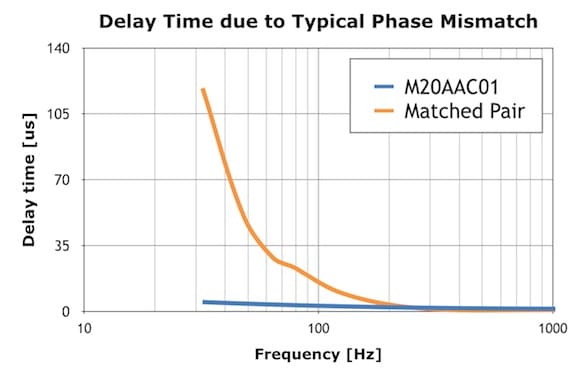Current to Alternative Directional Microphone Technologies II
By Aart van Halteren, M.Sc., Chief Technical Officer, Sonion, The Netherlands.
and Ann-Marie Sänger, Senior Product DevelopmentEngineer, Sonion, The Netherlands
In a previous post, the authors illustrated how speech intelligibility in noisy situations can be improved for the hearing aid user by providing directional hearing. The current industry standard is to provide adaptive directionality using two omnidirectional microphones. It was also shown that these two omnidirectional microphones must be matched very tightly for optimal performance.
New Microphone Module Designed to Improve Robustness
In this post, a new microphone module is presented that is designed to improve directional microphone robustness against ambient temperature and humidity changes, as well as for handling during production. A microphone designed to improve robustness is shown in Figure 1.

Figure 1. The Sonion M20 microphone module design.
Robustness of the M20 Microphone Module

Figure 2. Delay time caused by typical low-frequency phase mismatch of the M20AAC01 vs. matched pair.
In the M20 microphone module, front and rear microphones share one common rear volume. Therefore, the membranes are acoustically coupled. Due to the acoustic coupling, both membranes are forced to move in phase in the low frequencies. The result is a very low delay time between both outputs of the M20 microphone module compared to a matched pair of two regular omnidirectional microphones (Figure 2).
The M20 microphone module is designed for low amplitude drift related to humidity/temperature changes. This is mainly done by matching the components of front and rear microphone. Also, the membranes are mechanically decoupled from the module housing, which makes the M20 microphone module very robust for handling during hearing aid production.
Directional Equivalent Input Noise of the M20 Microphone Module
In addition to the tight low-frequency phase matching, the acoustic coupling in the M20 microphone module leads to significantly lower directional equivalent input noise compared to a regular matched pair of two omnidirectional microphones (Figure 3).

Figure 3. Directional equivalent input noise of the M20 microphone module (blue) compared to a regular matched pair (orange) for 5.5 mm port spacing.
Summary
To sum up the design features of the M20 microphone module, it combines superior directional equivalent input noise with a design that is very robust for temperature and humidity changes as well as for handling during hearing aid production.
The topic of next week’s post will be a newly developed directional technology that can tolerate even very severe mismatches between the applied microphones without showing significant degradation of directionality.





